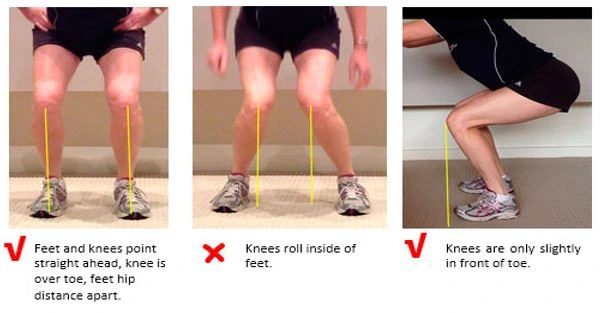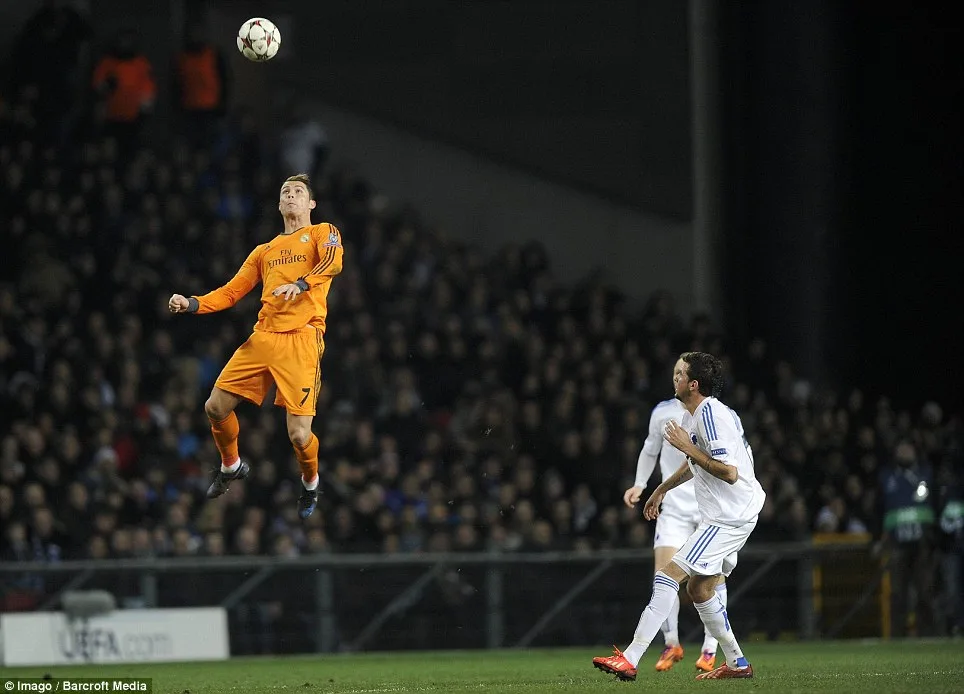Contents
- Introduction
- How to test vertical jump?
- How to improve the Vertical Jump?
- Summary
- References
Introduction
The vertical jump is an essential skill in sports such as football (soccer), volleyball, basketball, and handball (1, 2, 3, 4). Interestingly for sports where the vertical jump isn’t a direct part of play, success may still be predicted by vertical jump ability. Olympic swimming gold medalist Caeleb Dressel has a vertical jump of 109 cm and although vertical jump ability is unlikely to be associated with swimming success, Dressel transfers his vertical jump power into his turns in swimming races. Interestingly, a relationship between vertical jump ability, acceleration speed, and one-repetition maximum (1RM) back squat strength also appears to exist, further highlighting the importance of vertical jump ability (5).
How to test vertical jump?
The vertical jump is used to assess lower-body power (6). How the vertical jump is measured will be determined by the availability of equipment and finances. Professional sports teams are going to have access to more expensive equipment than amateur athletes. However, there are many different options to measure vertical jump performance for all athletes. Here are some options:
Using a Wall
This is the most simplistic way to measure vertical jump performance. An athlete will put chalk on their fingertips, stand next to a wall and reach as high as they can to touch the wall. The chalk will leave a mark on the wall, and this will be the athlete’s standing reach height. The athlete then performs a vertical jump as high as they can and touches the wall at the top portion of the jump, leaving a second chalk mark. The difference between the two chalk marks will be the athlete’s vertical jump height. Although this test is quick and easy to perform, its accuracy is questionable as it requires the athlete to touch the wall at the highest point of the jump, which can be difficult to quantify.
Using a Vertec Device
This requires a Vertec device to measure jump height (Figure 1). To conduct the test, the athlete performs a vertical jump and reaches as high as they can with their hand to hit the vane of the Vertec, trying to displace as many of the vanes as possible. Jump height is determined by the difference in the athlete’s standing height and the highest vane displaced during the jump. One issue with this test is the reaching with the hand action. Jump height can be misinterpreted if the athlete has poor shoulder range of motion and/or poor coordination of the arm and leg movements together.

Force Plates/Jump Mats
Force plates are expensive but they are the gold standard in assessing vertical jump ability. Force plates can provide reams of information such as power output, the difference in leg power between the right and left leg, and contraction times which are beneficial for elite athletes looking for marginal gains or athletes returning from injury.
Jump mats/contact platforms are less expensive and typically use built-in software to estimate jump height based on flight time. Although many types of vertical jumps can be performed on force plates and jump mats, the countermovement jump (CMJ) is the most common type of vertical jump assessed. The testing procedure of the CMJ is straightforward and requires minimum space and time.
Firstly, an athlete will step into the testing area or on an apparatus such as a jump mat or force plate. Hands must be placed on the hips and remain there throughout the test. However, some testers may allow an arm swing for the test. Research has shown the arm swing can improve performance by at least 10 %, so testers need to be consistent if they permit the arm swing (6). Once instructed, the athlete lowers down to a self-selected depth and jumps as high as they can in one continuous motion. During take-off, the athlete extends through their ankles, knees, and hips and maintains this position while in the air. The athlete should jump as high as possible and try to land in the same position they took off from. Failing to land in the starting position may delay flight time, thus, giving a false score.
How to Improve the Vertical Jump?
It is important to note the vertical jump is a power movement. So, power optimization is necessary for vertical jump performance. Power can be defined as force x velocity. Therefore, it is important to include exercises that will target both force and velocity to improve vertical jump ability.
Increase Strength
Developing a strong base of maximum strength training will increase one’s force capabilities and improve power optimisation. Exercises involving multiple joints and muscle groups working together like the squat are a great choice for maximum strength training – research by Wisloff et al. (2003) has shown a strong relationship between squat 1RM and vertical jumping ability (7).
Interestingly, research by Wirth et. (2016) showed an eight-week squatting intervention to improve vertical jump performance by 12.4 % (8). When programming for maximum strength development, the National Strength and Conditioning Association (NSCA) recommends using loads greater than 85 % of 1RM for two to six sets of six repetitions or less (9). Rest times should be at least two minutes between sets to allow sufficient recovery (9).
Programme Plyometrics
Plyometrics are exercises that exert maximum force in short time periods and are often referred to as “jump training”. Plyometric training is a ‘must-do’ to improve vertical jump ability, with vast amounts of evidence showing significant improvements in vertical jump height (10). In fact, the vertical jump itself is a plyometric movement. Improvements in all vertical jumps typically range between 4 – 8 % following plyometric training. Improvements are likely due to increased muscular power and enhanced coordination following plyometric training (10).
Before starting plyometric training, it appears beneficial to have a strong strength base, as weaker or inexperienced individuals tend to benefit less from plyometrics (11). It was once recommended that individuals should be able to squat 1.5 times their own body weight before engaging in plyometric training (12). However, once good balance and correct technique can be displayed, it is relatively safe to introduce low-intensity plyometric exercises. A good test to see if an individual is ready for plyometric training is to stand on one leg for 30 seconds and hold your balance without falling. For those looking to advance to higher-intensity plyometric exercises, holding a single-leg half-squat position for 30 seconds is a good examination.
The landing technique is crucially important for safety during plyometric training. A correct landing position will have the shoulders over the knees, with flexed ankles, knees, and hips. The knees must be positioned over the toes as knee valgus (knees failing inwards) is a significant risk factor for knee injuries (Figure 1). Plyometric training should initially focus on low-intensity double-leg hops and progress to high-intensity exercises such as unilateral jumps and depth jumps.

Research from de Villarreal et al. (2009) shows a combination of countermovement jumps, squat jumps, and depth jumps are superior for improving vertical jump ability rather than only using one form of exercise (13). It appears a plyometric programme of 10 weeks with at least 20 total sessions and 50 jumps per session is optimum for improvements in vertical jump ability (13). However, if you are new to plyometric training, just focusing on low-level hops with a volume of 80–100-foot contacts per session is advised before focusing on more advanced exercises. Foot contact is simply every time the foot hits the ground in a plyometric exercise.
Programme Olympic Lifts
Although plyometrics are going to be an optimum choice for improving power development, incorporating power-based exercises in the weights room is also going to assist in improving vertical jump height. Firstly, it is important to note individuals should need to have proficient technique and adequate experience before incorporating specific power development exercises. Olympic lifts include exercises such as the clean, the snatch, and the jerk. These exercises can generate extraordinary high-power outputs. For example, Haff (2001) reports a 100 kg man can record nearly five times more power output in Olympic lift exercises compared to traditional exercises like a squat and deadlift (14). Therefore, Olympic lifts are going to be a great choice for developing power which will lead to higher jumps.
Research from Hackett et al. (2015) found Olympic lifting training improved vertical jump height by 7.7 % and was just as effective as plyometric training for improving vertical jump height (15). Similarly, research from Tricoli et al. (2005) showed Olympic lifting increased jump height and it was even more effective than a combination of plyometric and resistance training (16). The reason for the effectiveness of Olympic lifts is they teach the central nervous system to fire a maximum amount of motor units in the shortest possible time and this transfers nicely into effective vertical jumping ability.
In addition, Olympic lifts also provide ‘triple extension’ which is the extension of the ankle, knees, and hips. Being able to triple extend powerfully is a key ingredient to effective vertical jumping as well. For power training programming, the NSCA recommends using loads of 75-90 % IRM for one to five reps of three to five sets (9). Rest times of two to five minutes are also recommended between sets.
Summary
Although there is definitely not a one-size-fits-all approach, incorporating max strength training, plyometrics, and Olympic lifting in a long-term periodised plan seems optimum for improving vertical jump performance. Developing maximum strength, particularly in a squatting movement pattern is advised. This will increase force development capability which contributes to a higher vertical jump.
As mentioned earlier, the relationship between vertical jump performance and squat 1RM is strong too. Including plyometrics in a training program is necessary for lower body power development. The vertical jump is a plyometric movement so jump height won’t improve as rapidly without practicing it. However, be vigilant with plyometric training, especially on landing technique. Finally, for an experienced trainer, incorporating the Olympic lifts into a programme can add a little bit more height to the vertical jump.
- Krüger, K., Pilat, C., Ückert, K., Frech, T., Mooren, F. C. (2014) Physical Performance Profile of Handball Players Is Related to Playing Position and Playing Class. Journal of Strength and Conditioning Research, 28(1): 117-125. https://doi.org/10.1519/JSC.0b013e318291b713
- Ziv, G., Lidor, R. (2009) Physical Attributes, Physiological Characteristics, On-Court Performances and Nutritional Strategies of Female and Male Basketball Players. Sports Med, 39: 547–568. https://doi.org/10.2165/00007256-200939070-00003
- Sheppard, J., Cronin, J., Gabbett, T., McGuigan, M., Etxebarria, N., Newton, R. (2008). Relative Importance of Strength, Power, and Anthropometric Measures to Jump Performance of Elite Volleyball Players. Journal of Strength and Conditioning Research 22(3): 758-765. https://doi.org/10.1519/JSC.0b013e31816a8440
- Stølen, T., Chamari, K., Castagna, C. and Wisloff, U. (2005). Physiology of Soccer. Sports Med, 35: 501–536. https://doi.org/10.2165/00007256-200535060-00004
- Rodríguez-Rosell, D., Mora-Custodio, R., Franco-Márquez, F., Yáñez-García, J. M., González-Badillo, J. J. (2017). Traditional vs. Sport-Specific Vertical Jump Tests: Reliability, Validity, and Relationship With the Legs Strength and Sprint Performance in Adult and Teen Soccer and Basketball Players. Journal of Strength and Conditioning Research, 31(1): 196-206. https://doi.org/10.1519/JSC.0000000000001476
- Cheng, K. B., Wang, C. H., Chen, H. C., Wu, C. D., & Chiu, H. T. (2008). The mechanisms that enable arm motion to enhance vertical jump performance-a simulation study. Journal of biomechanics, 41(9): 1847–1854. https://doi.org/10.1016/j.jbiomech.2008.04.004
- Wisløff U, Castagna C, Helgerud, J., Jones, R., & Hoff, J. (2004). Strong correlation of maximal squat strength with sprint performance and vertical jump height in elite soccer players. British Journal of Sports Medicine, 38: 285-288. https://doi.org/10.1136/bjsm.2002.002071
- Wirth, K., Hartmann, H., Sander, A., Mickel, C., Szilvas, E., & Keiner, M. (2016). The Impact of Back Squat and Leg-Press Exercises on Maximal Strength and Speed-Strength Parameters. Journal of strength and conditioning research, 30(5): 1205–1212. https://doi.org/10.1519/JSC.0000000000001228
- Haff, Guy Gregory. & Triplett, N. Travis. & National Strength & Conditioning Association (U.S.), issuing body. (2016). Essentials of strength training and conditioning. Champaign, IL: Human Kinetics
- Markovic G. (2007). Does plyometric training improve vertical jump height? A meta-analytical review. British journal of sports medicine, 41(6): 349–355. https://doi.org/10.1136/bjsm.2007.035113
- Miller, M. G., Herniman, J. J., Ricard, M. D., Cheatham, C. C., & Michael, T. J. (2006). The effects of a 6-week plyometric training program on agility. Journal of sports science & medicine, 5(3): 459–465. https://pubmed.ncbi.nlm.nih.gov/24353464/
- Holcomb, W. R., Kleiner, D. M., & Chu, D. A. (1998). Plyometrics: Considerations for Safe and Effective Training. Strength and Conditioning, 20(3): 36-41. https://www.ncbi.nlm.nih.gov/pmc/articles/PMC4637913/
- de Villarreal, E. S., Kellis, E., Kraemer, W. J., & Izquierdo, M. (2009). Determining Variables of Plyometric Training for Improving Vertical Jump Height Performance: A Meta-Analysis. Journal of Strength and Conditioning Research, 23(2): 495-506. https://doi.org/10.1519/JSC.0b013e318196b7c6
- Haff, G. G., Whitley, A., & Potteiger, J. (2001). A Brief Review: Explosive Exercises and Sports Performance. Strength and Conditioning Journal, 23(3): 13. https://journals.lww.com/nsca-scj/Citation/2001/06000/A_Brief_Review__Explosive_Exercises_and_Sports.3.aspx
- Hackett, D., Davies, T., Soomro, N., & Halaki, M. (2015). Olympic weightlifting training improves vertical jump height in sportspeople: A systematic review with meta-analysis. British Journal of Sports Medicine, 50(14): 865–872. https://doi.org/10.1136/bjsports-2015-094951
- Tricoli, V., Lamas, L., Carnevale, R., & Ugrinowitsch, C. (2005). Short-term effects on lower-body functional power development: weightlifting vs. vertical jump training programs. Journal of strength and conditioning research, 19(2): 433–437. https://doi.org/10.1519/R-14083.1




